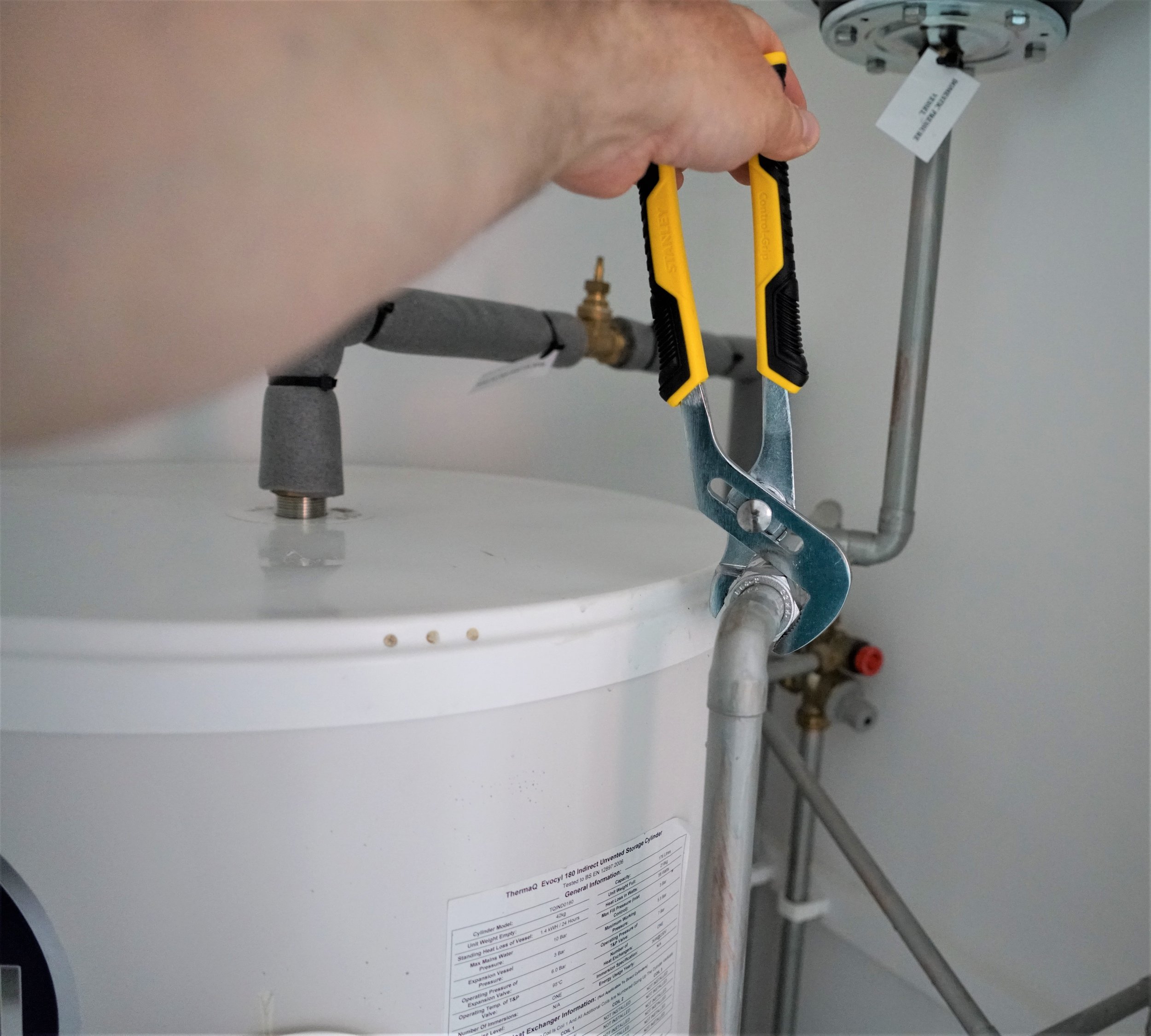Bladder tanks are pre-charged pressurized tanks that use a flexible membrane to separate the water and air, while pressure tanks use a diaphragm or a bladder to maintain pressure in the water system. Bladder tanks are known for their ability to maintain constant pressure and are often used in residential and commercial water systems, while pressure tanks are commonly used in well systems to store water under pressure.
When it comes to water systems, choosing the right type of tank is crucial for ensuring efficient and reliable operation. Understanding the differences between bladder tanks and pressure tanks can help you make an informed decision that meets your specific needs.
We will compare bladder tanks and pressure tanks, highlighting their respective features, benefits, and applications to help you determine which one is best for your water system. Whether you are looking to upgrade an existing system or install a new one, selecting the appropriate tank is essential for maintaining optimal water pressure and flow.
Purpose And Applications
Key functions of bladder tanks: Bladder tanks are designed to store and deliver various fluids under pressure. They are commonly used in fire protection systems, heating and cooling applications, and in industrial settings where a constant supply of liquid is required. The bladder inside the tank separates the liquid from the air, maintaining pressure and preventing contamination.
Primary uses of pressure tanks in systems: Pressure tanks are widely used in plumbing systems, water supply, and well pumps. They serve to maintain water pressure, reduce pump cycling, and act as a reservoir to accommodate the variations in water demand. These tanks are crucial in preventing pump and motor damage, as well as providing a consistent flow of water.
How application determines tank choice: The choice between bladder and pressure tanks depends on the specific requirements of the system. Bladder tanks are ideal for systems requiring a higher degree of water pressure control and protection against contamination, while pressure tanks are best suited for applications where maintaining water pressure and minimizing pump cycling are the primary concerns.
Design And Construction
Bladder tank materials and structure: Bladder tanks are typically constructed using high-quality materials such as reinforced rubber or polymer, creating a flexible and durable compartment for storing liquids or air. The bladder is designed to fit snugly within the tank, preventing any leakage or contamination of the stored substance.
Pressure tank design specifics: Pressure tanks are engineered with a sturdy metal shell, often made of steel or stainless steel, to withstand high internal pressures. These tanks are designed to maintain pressure levels consistently, ensuring smooth and efficient operation.
Impact of construction on performance: The construction of bladder tanks contributes to their ability to adapt to varying liquid or air volumes, offering versatility and reliability. Conversely, the robust construction of pressure tanks enables them to withstand intense pressure fluctuations, making them ideal for heavy-duty applications such as industrial processes and water supply systems.
Installation And Maintenance
Installing a Bladder Tank: When installing a bladder tank, it is important to consider the following steps: Firstly, choose a suitable location with enough space for installation. Ensure the area is well-ventilated and free from potential hazards. Secondly, follow the manufacturer’s instructions carefully for connecting the tank to the plumbing system, ensuring all fittings are secure. Lastly, test the tank to verify it is functioning correctly and adjust the pressure settings if necessary.
Pressure Tank Installation Differences: Unlike bladder tanks, pressure tanks require additional consideration during installation. The process involves more complex plumbing work as the tank needs to be connected to the pressure switch and control box. It is crucial to follow the specific guidelines provided by the manufacturer to ensure correct installation and functionality.
Maintenance Requirements for Longevity: Both bladder tanks and pressure tanks require regular maintenance to ensure longevity. This includes periodic inspection of the tank’s condition, pressure adjustments, and checking for potential leaks. Proper maintenance will extend the lifespan of the tank and contribute to its efficient operation.
Advantages Of Bladder Tanks
Bladder tanks offer several advantages over pressure tanks. Reduced water log risks are a key benefit, as the bladder inside the tank prevents water from mingling with the air. This separation maintains consistent pressure and reduces the chances of waterlogging. Additionally, the ease of pressure adjustment in bladder tanks allows for convenient and precise control over the system’s pressure levels, ensuring optimal performance. Another advantage is the seamless replacement procedures, which simplify maintenance and minimize downtime. Overall, bladder tanks present significant advantages for various applications, making them a preferred choice for many systems.
Advantages Of Pressure Tanks
Pressure Tanks offer several advantages over bladder tanks, making them reliable for various applications. Their traditional design ensures long-lasting durability and consistent performance. With a wide range of capacities and sizes available, pressure tanks can accommodate different system requirements. This versatility makes them suitable for various residential, commercial, and industrial applications. Additionally, pressure tanks offer cost-effective solutions, providing budget planning flexibility for customers. The affordability and reliability of pressure tanks make them a preferred choice for numerous fluid storage and pressure regulation needs.
Performance Comparison
Bladder Tanks are known for their durability in demanding conditions, providing long-term reliability in water pressure management. The flexible bladder ensures consistent pressure without the need for frequent adjustments, making them an efficient choice for handling pump cycling variation. On the other hand, Pressure Tanks may also offer durability, but they may require more maintenance to ensure consistent performance under demanding conditions. Additionally, their response to pump cycling variation may not be as efficient as that of bladder tanks. When comparing the two, it’s important to consider the specific requirements of the application to determine which tank type best suits the needs.
Choosing For Your Needs
When choosing between bladder tank vs pressure tank, it’s essential to assess your water system requirements. Bladder tanks offer flexibility in controlling pressure, suitable for households with varying water demands. On the other hand, pressure tanks provide consistent pressure for more stable water delivery. Professional guidance is crucial to ensure the best fit selection for your specific needs.

Credit: www.fussellwelldrilling.com
Frequently Asked Questions For Bladder Tank Vs Pressure Tank
What Are The Key Differences Between A Bladder Tank And A Pressure Tank?
A bladder tank uses a flexible membrane to separate water and air, while a pressure tank has air and water in direct contact. Bladder tanks are more efficient in maintaining water pressure and are less prone to waterlogging compared to pressure tanks.
How Does A Bladder Tank Work And What Are Its Advantages?
A bladder tank works by using a flexible membrane to separate the air and water, preventing waterlogging and maintaining consistent pressure. Its advantages include improved water pressure regulation, reduced maintenance, and longer lifespan of the pump.
What Are The Benefits Of Using A Pressure Tank Over A Bladder Tank?
Pressure tanks often require less maintenance and have a simpler design compared to bladder tanks. They are suitable for applications where the water demand varies, providing a consistent flow of water without the need for additional components.
Can A Bladder Tank Be Used For Both Residential And Commercial Applications?
Yes, bladder tanks are suitable for both residential and commercial applications. They are commonly used in well systems, irrigation systems, and pressure booster systems, providing reliable water pressure for various purposes.
Conclusion
Both bladder tanks and pressure tanks are viable options for managing water systems. The choice ultimately depends on specific needs, space, and budget constraints. Understanding the key differences between the two tanks can help users make an informed decision. Overall, investing in the right tank can significantly improve water pressure and overall system efficiency.

